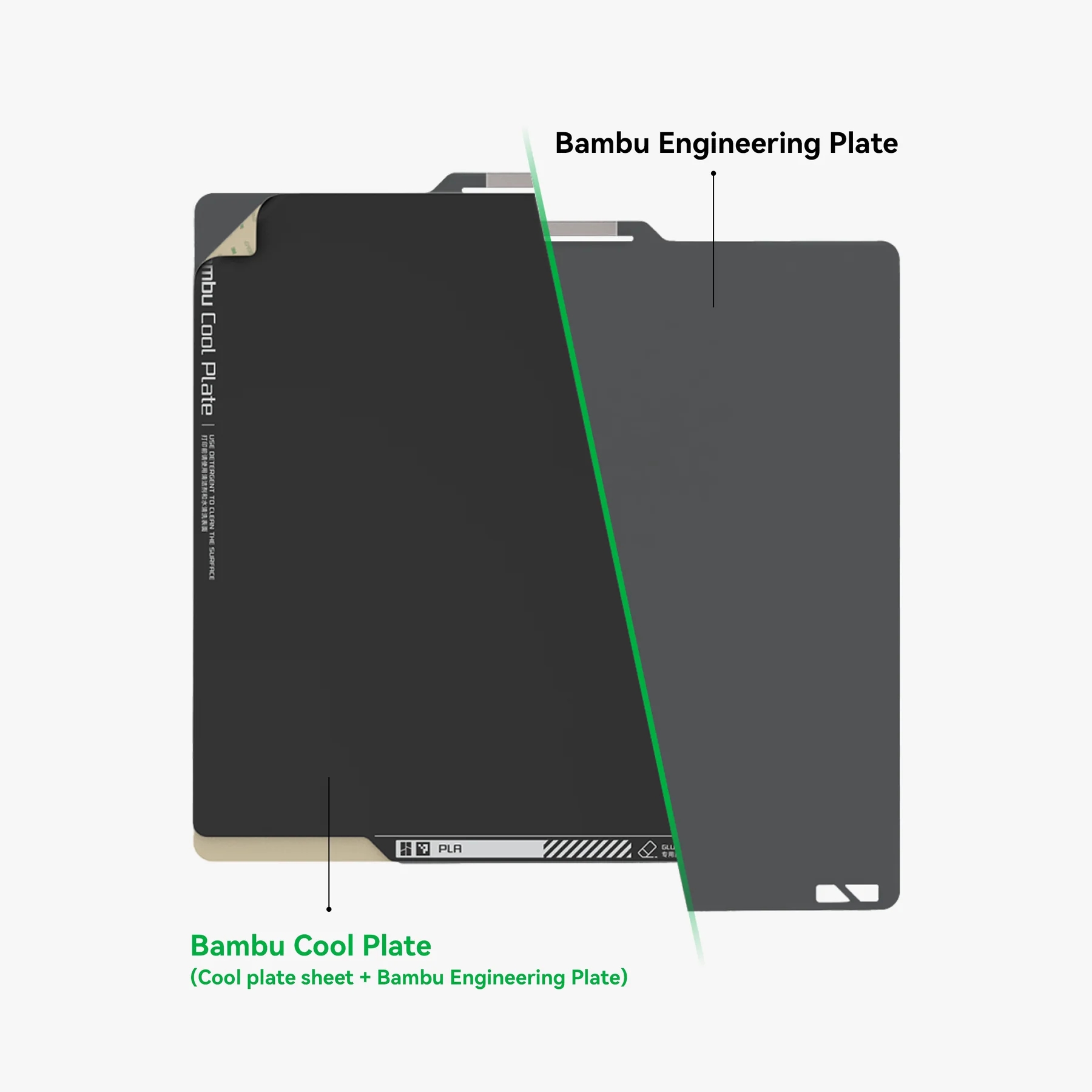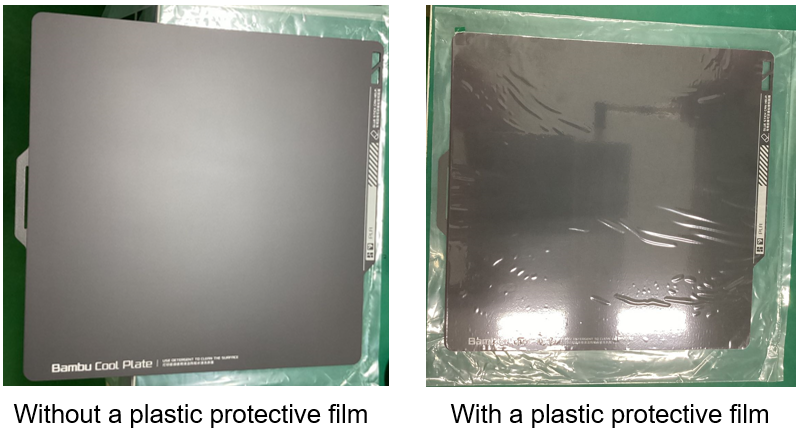¶ Introduction to cool plate
(Not currently available in stores)
Bambu Cool Plate consists of two parts: the Cool Plate sheet and the Engineering Plate. You can print on both sides of the plate.
The cool plate sheet, made of PC, has a smooth surface. It's attached to the engineering plate using 3M high heat-resistant double-sided tape. This plate is specifically designed for printing PLA filament. However, if you try to print with materials like PETG or ABS, you might encounter issues like bubbling and sticking. It's important to remember that when printing PLA on the Cool Plate, you need to use a Bambu glue stick or liquid glue for proper adhesion.

¶ Troubleshooting bed adhesion issues
The Bambu Lab Cool Plate is designed for optimal adhesion during printing, there may be cases where the results are not as expected. Here are a few recommended steps to troubleshoot adhesion issues with the Bambu Lab Cool Plate.
¶ Clean the printing surface
Periodically, we recommend cleaning the Bambu Lab Cool Plate to ensure that the printing surface is free of debris, old glue stick, or fingerprints. The natural oils from your hands can transfer to the printing surface, impacting the sheet's adhesion properties
We suggest cleaning the printing surface with warm water and regular soap. You can use a basic sponge and dishwashing detergent, wash it with water, and dry it with a regular paper towel.
¶ Check the heatbed temperature and the filament used
Most filament types come with a default preset in Bambu Studio. If you customize your profile, we recommend double-checking the temperatures set for the heatbed. Sometimes, you might need to adjust the temperature based on the type of filament used and its properties.
¶ Adjust part cooling according to the filament needs
Excessive cooling can sometimes harm the print quality and adhesion on the Bambu Lab Cool Plate.
While PLA filament benefits from increased cooling, especially during fast printing, if you encounter adhesion issues, we suggest reducing the speed of the secondary cooling fan.
Additionally, you have the flexibility to adjust when the cooling process begins based on your requirements. For instance, we recommend starting the secondary cooling fan after completing the first three layers of the print to ensure optimal adhesion during the printing process.
¶ Change the first layer settings in the slicer
You can also adjust slicer settings for the first layer to enhance adhesion. The slicer profiles in Bambu Studio come pre-configured with values that were performed best during testing. However, if you encounter issues, we suggest starting the print with a 0.5mm extrusion width and a 0.25mm layer height for optimal results. These settings establish a solid foundation for the rest of the print and improve the chances of success.
¶ Ask for help
If you still encounter adhesion issues after following the steps described in this article, feel free to open a ticket, and our support team will assist you.
Troubleshooting Adhesion Issues with the Bambu Lab Cool Plate
¶ Note
If your high-temperature plate comes with a plastic protective film on the surface, please remove it before using it.
